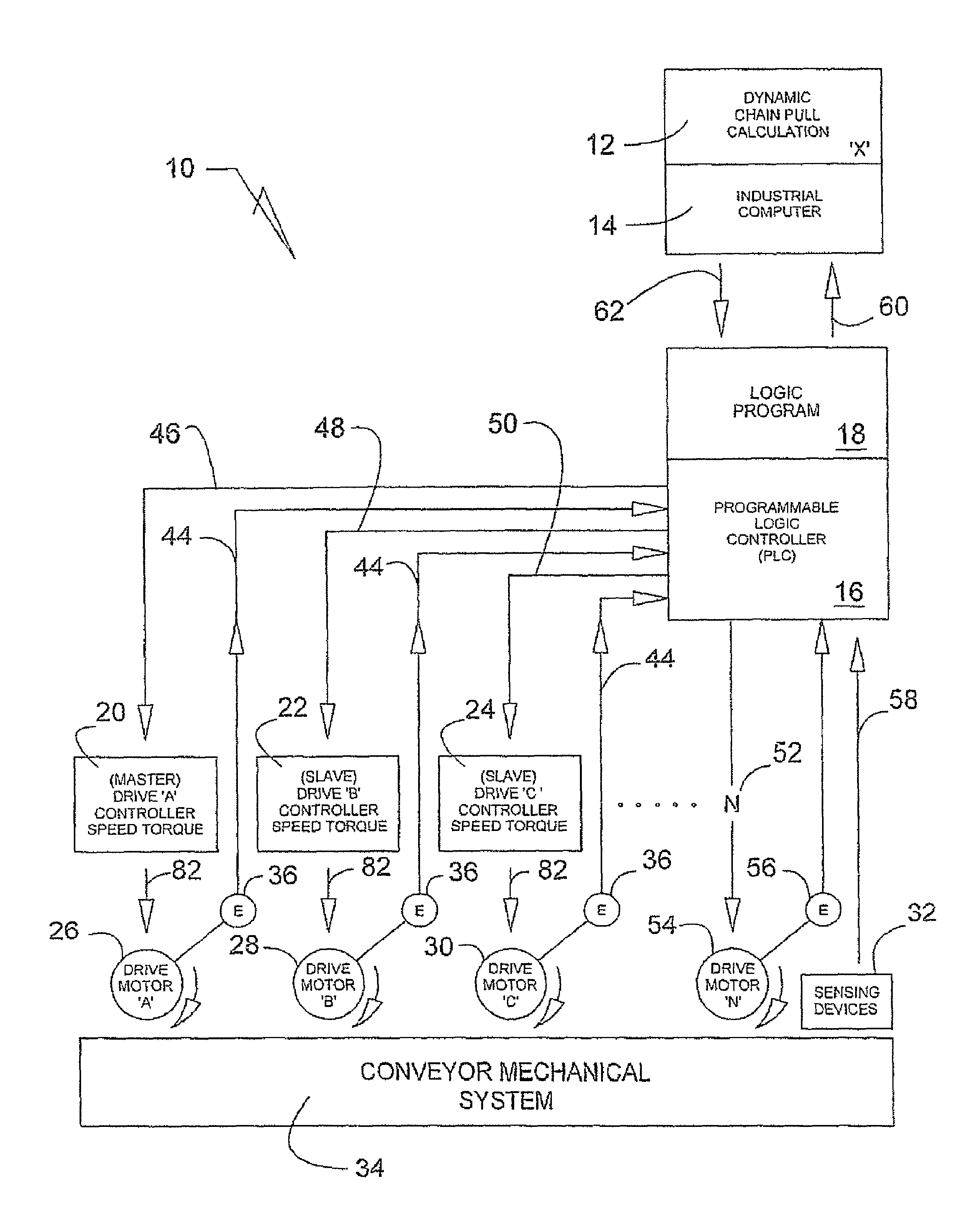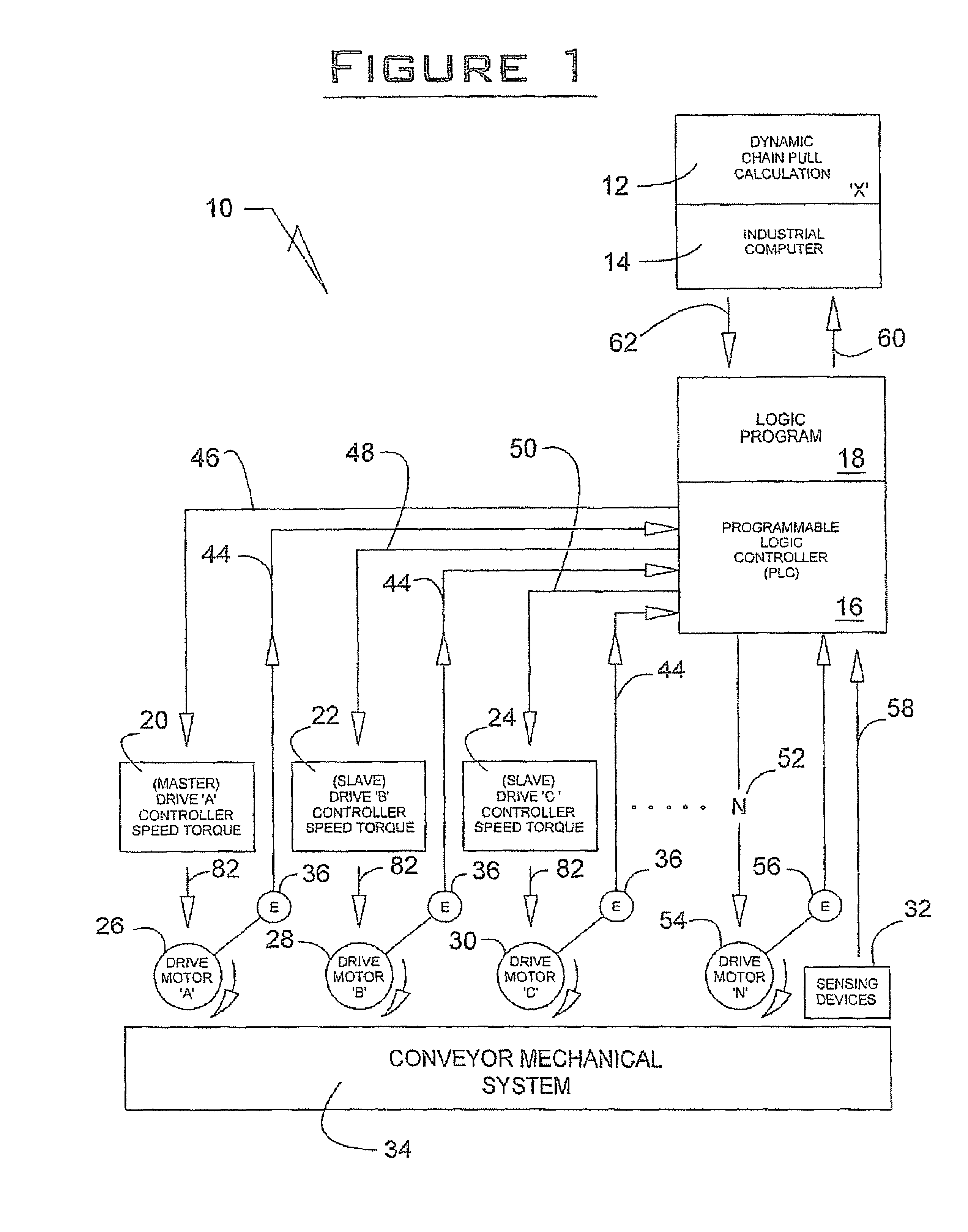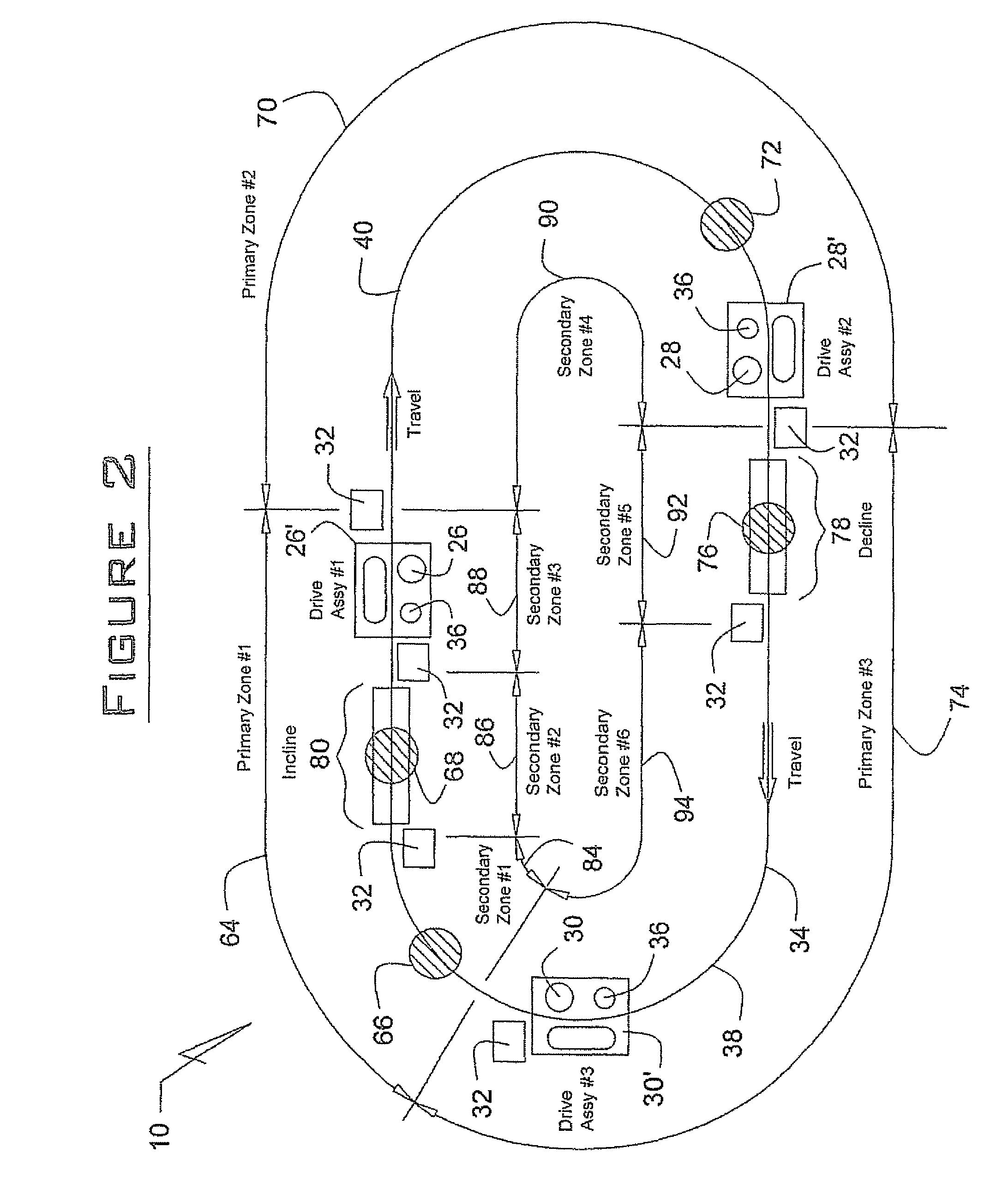Conveyor drive control system
a control system and conveyor technology, applied in the field of conveyor drive control system, can solve the problems of erratically advancing conveyor chains, affecting the efficiency inefficient operation of drive motors in any given zone along the conveyor line, so as to increase the likelihood of erratic performance, increase the number of drives, and prolong the chain
- Summary
- Abstract
- Description
- Claims
- Application Information
AI Technical Summary
Benefits of technology
Problems solved by technology
Method used
Image
Examples
Embodiment Construction
[0017]A drive control system 10 is illustrated in FIG. 1 and includes a dynamic chain pull calculation computer software program 12, and industrial computer 14, a PLC 16 with software 18, a plurality of drive controllers 20, 22 and 24, a plurality of drive motors 26, 28 and 30 and sensing devices 32. The drive control system 10 is integrated with a conveyor 34 which includes typical components for moving work pieces throughout an assembly line. It will be appreciated that the present drive control system 10 can be utilized wherever it is desired to dynamically control the movement of material from place to place.
[0018]With continued reference to FIG. 1, an individual encoder 36 is places in proximity to drive motors 26, 28 and 30 for counting and monitoring the links 38 that comprise a conveyor or chain 40. The conveyor chain can be in excess of the 2,000 ft. limitation that is typically ascribed to chain conveyor applications. Through utilization of the encoders 36, the specific nu...
PUM
 Login to View More
Login to View More Abstract
Description
Claims
Application Information
 Login to View More
Login to View More - R&D
- Intellectual Property
- Life Sciences
- Materials
- Tech Scout
- Unparalleled Data Quality
- Higher Quality Content
- 60% Fewer Hallucinations
Browse by: Latest US Patents, China's latest patents, Technical Efficacy Thesaurus, Application Domain, Technology Topic, Popular Technical Reports.
© 2025 PatSnap. All rights reserved.Legal|Privacy policy|Modern Slavery Act Transparency Statement|Sitemap|About US| Contact US: help@patsnap.com



